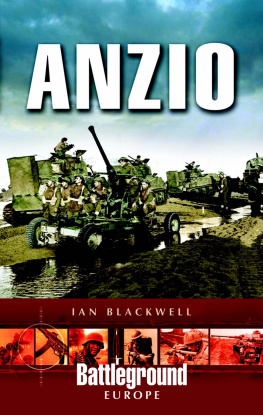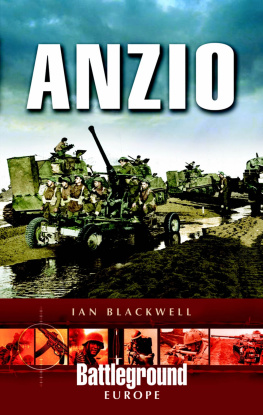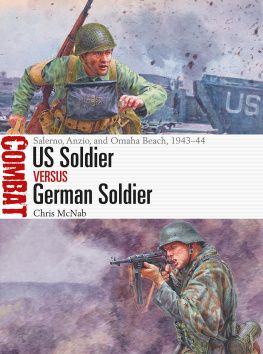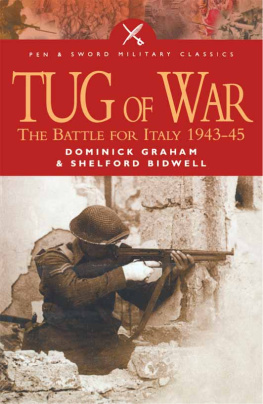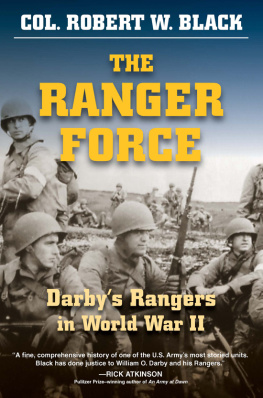Ian Blackwell - Anzio Italy 1944
Here you can read online Ian Blackwell - Anzio Italy 1944 full text of the book (entire story) in english for free. Download pdf and epub, get meaning, cover and reviews about this ebook. year: 2006, publisher: Pen and Sword Military, genre: Adventure. Description of the work, (preface) as well as reviews are available. Best literature library LitArk.com created for fans of good reading and offers a wide selection of genres:
Romance novel
Science fiction
Adventure
Detective
Science
History
Home and family
Prose
Art
Politics
Computer
Non-fiction
Religion
Business
Children
Humor
Choose a favorite category and find really read worthwhile books. Enjoy immersion in the world of imagination, feel the emotions of the characters or learn something new for yourself, make an fascinating discovery.
- Book:Anzio Italy 1944
- Author:
- Publisher:Pen and Sword Military
- Genre:
- Year:2006
- Rating:4 / 5
- Favourites:Add to favourites
- Your mark:
- 80
- 1
- 2
- 3
- 4
- 5
Anzio Italy 1944: summary, description and annotation
We offer to read an annotation, description, summary or preface (depends on what the author of the book "Anzio Italy 1944" wrote himself). If you haven't found the necessary information about the book — write in the comments, we will try to find it.
Anzio Italy 1944 — read online for free the complete book (whole text) full work
Below is the text of the book, divided by pages. System saving the place of the last page read, allows you to conveniently read the book "Anzio Italy 1944" online for free, without having to search again every time where you left off. Put a bookmark, and you can go to the page where you finished reading at any time.
Font size:
Interval:
Bookmark:
One of the great pleasures in embarking on the research for this book has been in meeting so many extremely helpful people, for whom no request seems to have been too much trouble.
In particular I have to thank, in Italy, Alessandro Campagna and Roberto Molle of the Associazione Battaglia di Cassino, who have very kindly extended their interest from Cassino to join me in walking the ground at Anzio. Alessandro is responsible for recording veterans accounts of the Italian campaign, and may be contacted at alessandrocampagna@libero.it he would be delighted to hear from anyone who has a personal story. With the passing of the years the opportunity to collect these first-hand accounts diminishes, and this invaluable work should be encouraged wherever possible. Alessandro was kind enough to provide photographs and maps for this book, and to introduce me to Dottoressa Fiorenza Castaldi of the Comune di Pomezia who guided me around areas of the battlefield that I would otherwise not have had access to. I am indebted to Dottore Angelo Scim for generously allowing her the time away from her desk to do this; and to Signore Bacoccoli who led me through the depths of the Boot in February in pouring rain, which gave me a small inkling of what it must have been like there over sixty years ago.
In the United Kingdom I own a debt of gratitude to Chris Davis and Paul Hooton, whose interest in the Italian campaign has provided me with both practical support and much encouragement when working on this book. Also to the staff of the Prince Consorts Library, Aldershot, who have displayed remarkable patience in dealing with my innumerable requests for obscure volumes of military history, who have been extremely graceful in not pressing for the return of books when I have failed to send them back on time, and for their understanding when my aged dog took it into his head to devour one of their histories.
And to the officers and soldiers of those British Army regiments who have sought to develop their understanding of their profession through studying military history and visiting the battlefields, particularly those of the Italian campaign which have so many relevant lessons for coalition warfare.
Unless otherwise acknowledged, the photographs are courtesy of the Associazione Battaglia di Cassino.
The three landing beaches are only partly accessible today. The westernmost of them, PETER Beach (the British landing) may be overlooked from the Tor Caldera Regional Nature Reserve, which is open on selected days each week, less often during the winter months. Nevertheless, it is worth making the visit to walk through the park to the Tower, from which a clear view is obtained westwards along the beach. The park grounds also contain the remnants of British trenches, which have a brief description of the battle displayed alongside them. They are well signposted and easily found.
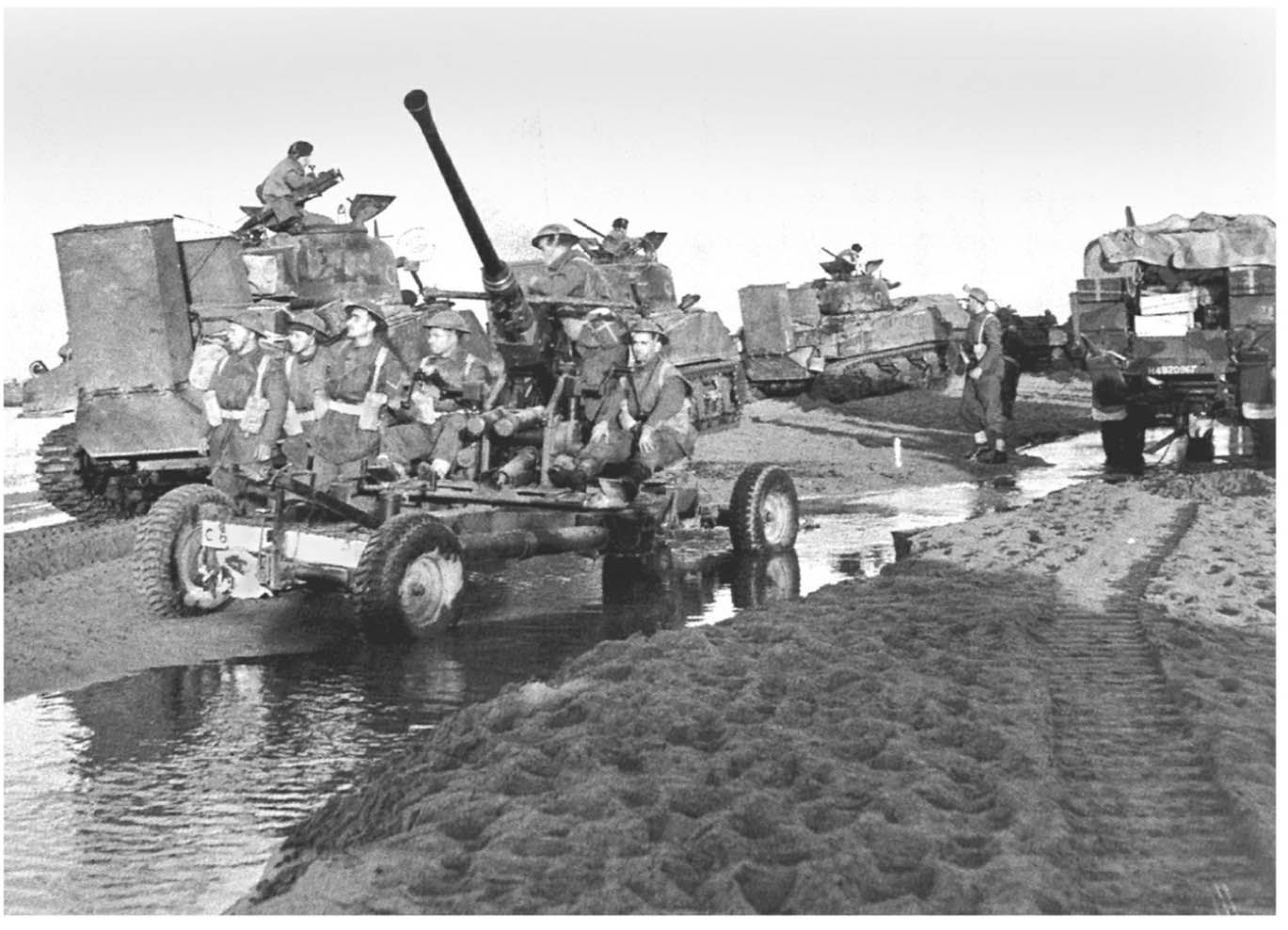
PETER Beach. Shermans with wading gear come ashore under the protection of a Bofors anti-aircraft crew.
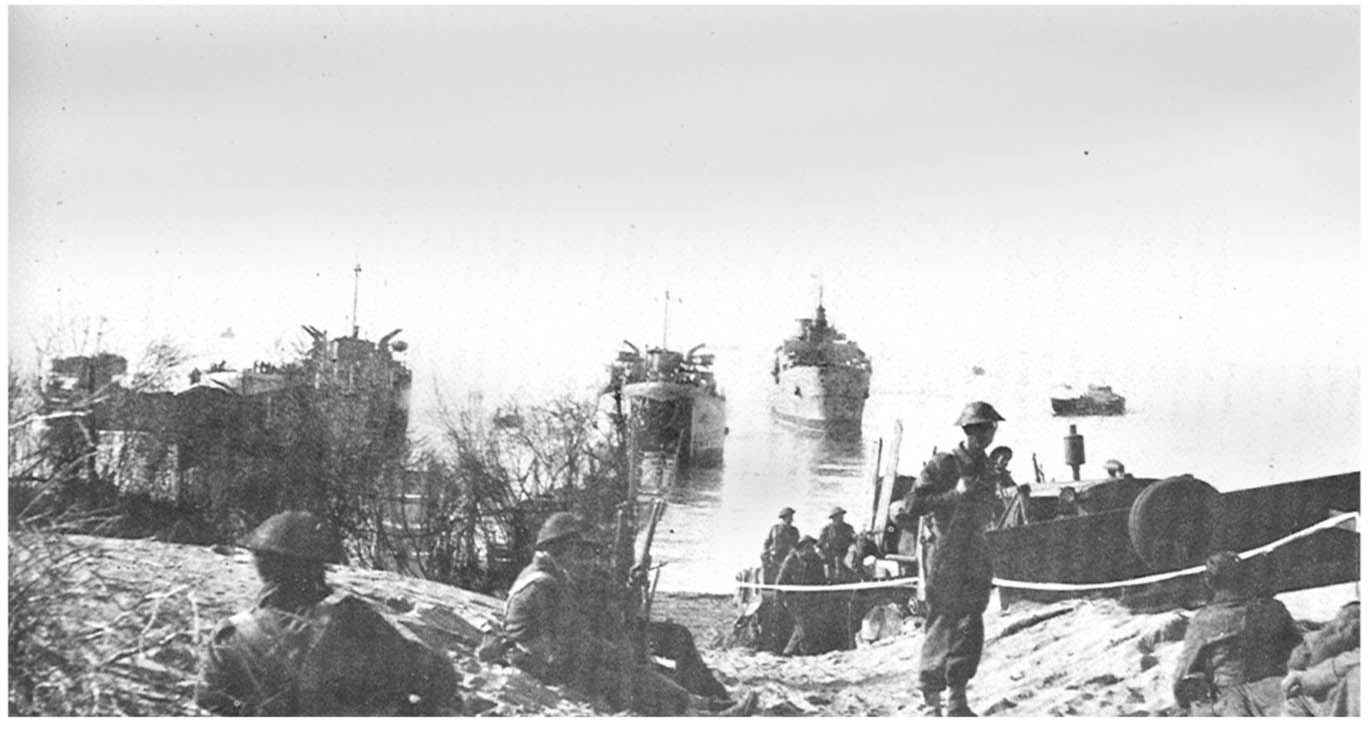
LSTs unloading on PETER Beach.
From the tower, which is 2,000 yards east of PETER Beach, the difficulties experienced during the landings can be readily understood. The routes inland have to find their way through the cliffs and sand dunes, and the thick undergrowth presented a barrier to vehicle movement. What is less obvious is the sandbank which lay under the surface of the water in 1944, and which prevented the deeper-draught vessels from reaching the shoreline.
The Landing
From late November 1943 onwards the reconnaissance of PETER Beach was carried out by folboat (two-man collapsible canoes) teams from a Combined Operations Pilotage Party and from Z Special Boat Section. These operations were intended to establish the beach conditions for landing personnel and vehicles, and to discover the extent of enemy defences of the area. They were very hazardous and not without mishap or casualties.
During the night of 2-3 December, for example, three folboats were launched from Moto Silurante 24 , an Italian Navy vessel now under command of the Royal Navy, off the intended landing beach. The mission, codenamed Operation PWQ, was led by Sub-Lieutenant KG Patterson RANVR, with AB GD Lockhead as his number two in the canoe. The two other folboats were manned by Captain WG Davis and CSM Galloway and Captain AR McClair and Sergeant R Sidlow, all from the SBS.
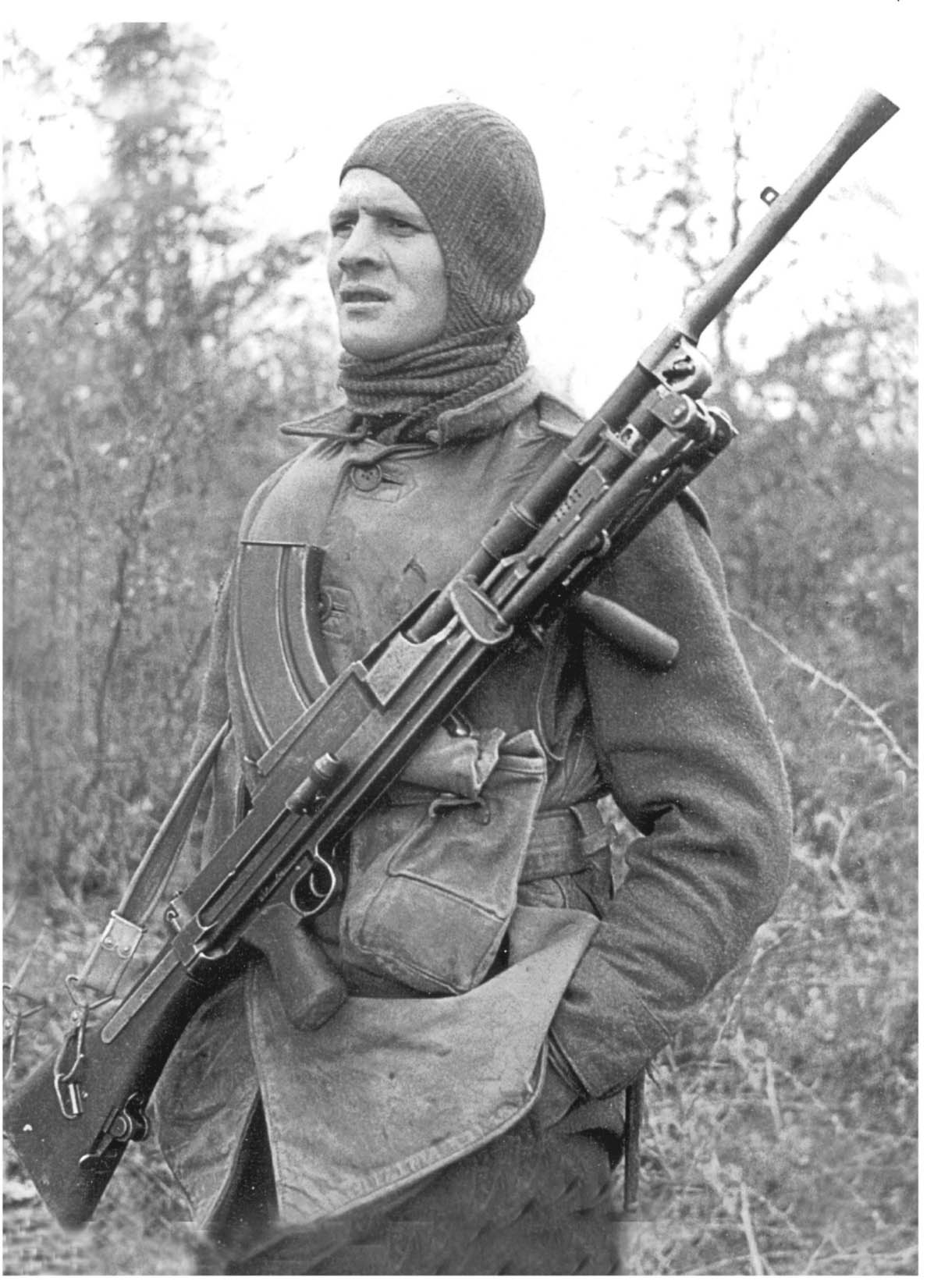
Commando at Anzio slung with a Mk 2 Bren gun.
At 0045 hours on 3 December MS 24 made landfall fifty yards northeast of Torre Caldara and the canoeists set off on their missions. Captain Davis headed for the shore, while Captain McClair paddled northwest to find the beach he had been tasked with investigating. After three-quarters of a mile he met Sub-Lieutenant Patterson, and informed him that it was his belief that they were out of position. While they were talking, their folboats were almost swamped by a large wave; the sea and the wind were rising, and visibility deteriorating. Patterson turned towards the shore to clarify his position, which was the last that was seen of him and Lockhead.
McClair continued on course and swam ashore at about 0200 hours to get the required information. By now the wind and sea had risen, and visibility had deteriorated. After twenty minutes he set course to return to the parent vessel, and was aboard it by 0320 hours.
Meanwhile Capt Davis and CSM Galloway, whose task it was to reconnoitre the southern extremity of PETER Beach near Torre Caldara, made soundings of the water depth offshore, and returned to MS 24 at 0225 hours, having seen lights flashing about half a mile further down the coast.
Sketch from Major Davis report on Operation PWQ
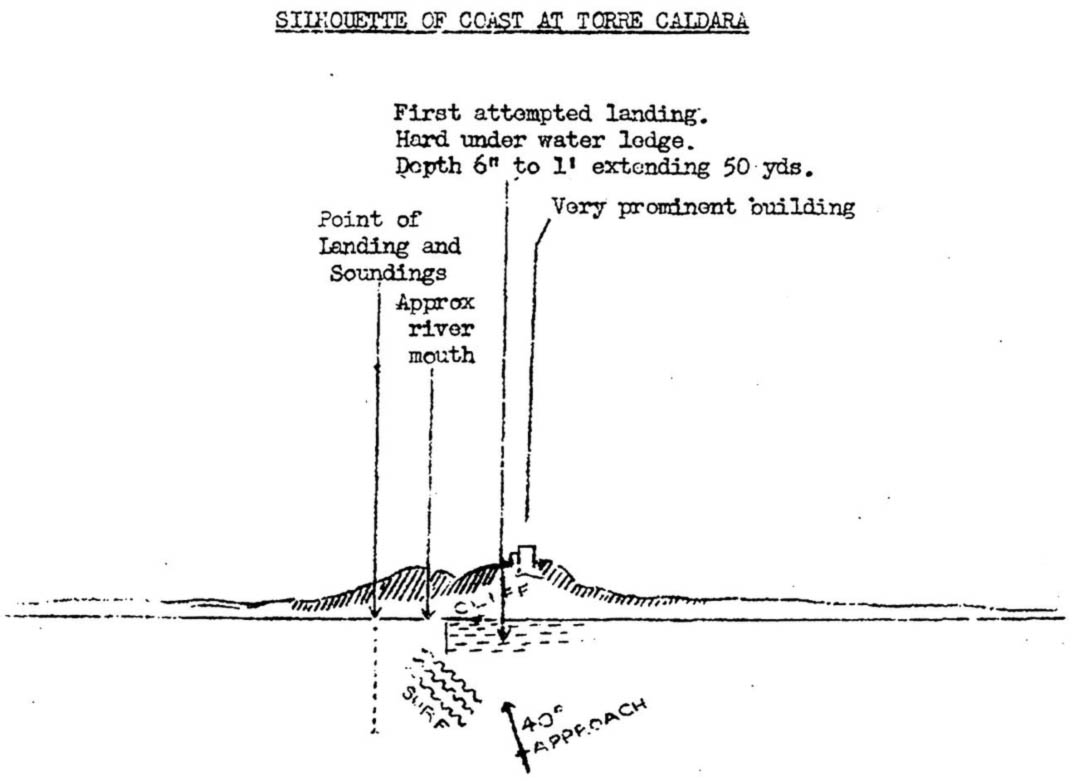
Nothing more was heard of Sub-Lieutenant Patterson and AB Lockhead, and the assumption was that their folboat had foundered in the surf. Although both McClair and Sidlow thought that they had heard voices from the shore, neither was certain enough to suggest turning back, and the two sailors had to be reported missing, presumed killed.
This incident was not the only one in which casualties happened off PETER Beach. During the early hours of 30 December, US Navy Ensigns KE Howe and M Pirro failed to return to their parent vessel, PT Boat 201. Captain Davis, commanding the party, considered that the Americans had either overturned their folboat or could not find their way back; with the calm sea, the latter alternative seemed more likely. Two other crews (Captain Davis and CSM Galloway, both RA; and Sub-Lieutenant T Williams RNVR and Ensign J G Donnell USN) returned safely.
Shortly after midnight on 22 January, Allied Task Force Peter dropped anchor offshore, having been guided into place by marker submarines, that for Peter Beach being HMS Ultor . The final approaches were signed by folboat crews from the Combined Operations Pilotage Parties, flashing marker lights out to sea. The landing craft were lowered and loaded with troops from the transports, the LSIs Sobieska , Glengyle and Derbyshire , and formed up into their assault formations, and at 0100 hours the LCT(R)s off each beach opened fire with their barrage of missiles beyond and to either side of the landing areas. They elicited no response from the shore, not even from the machinegun posts which aerial reconnaissance had shown to be established near the Tor Caldera. The first waves of troops, from 2nd Battalion of the North Staffordshire Regiment and 6th Battalion, The Gordon Highlanders disembarked from their assault boats ten minutes later, but their vessels having grounded on the sandbank had to wade the last hundred yards to firm ground.
Font size:
Interval:
Bookmark:
Similar books «Anzio Italy 1944»
Look at similar books to Anzio Italy 1944. We have selected literature similar in name and meaning in the hope of providing readers with more options to find new, interesting, not yet read works.
Discussion, reviews of the book Anzio Italy 1944 and just readers' own opinions. Leave your comments, write what you think about the work, its meaning or the main characters. Specify what exactly you liked and what you didn't like, and why you think so.

